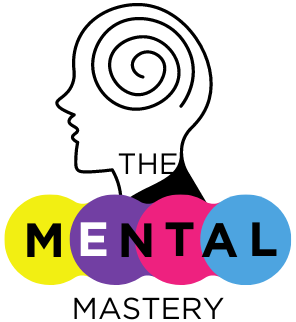7 Proven Techniques for Stress Management
Introduction
Although stress is an inescapable aspect of life, how we handle it can have a big impact on both our physical and emotional well-being. There is a lot of information about stress management strategies that have been found in recent research. This article looks at 7 proven strategies for stress management, well-being, and mental health enhancement.

1. Mindfulness Meditation
The practice of mindfulness meditation is an effective way to reduce stress. It entails concentrating on the here and now without passing judgment, which lessens tension and encourages relaxation. Research has demonstrated that practicing mindfulness meditation can reduce stress by lowering the body’s main stress hormone, cortisol levels (Goyal et al., 2014).
How to Practice Mindfulness Meditation
- Find a quiet place and sit comfortably. Locate a peaceful area and take a comfortable seat.
- Closer your eyes and inhale deeply.
- Pay attention to your breath, noting each inhalation and exhalation.
- If your thoughts drift, softly return them to your breathing.
You can increase your ability to cope with stress and sharpen your mind by including mindfulness meditation into your regular practice.
2. Physical Exercise
Getting regular exercise is one of the best methods to manage stress. Endorphins are the body’s natural mood enhancers, and exercise enhances their production. Additionally, it aids in lowering cortisol levels, a hormone linked to stress. Exercise has been shown in studies by Salmon (2001) to dramatically lower anxiety and elevate mood.
Types of Exercise for Stress Management
- Aerobic Exercise: Stress-relieving sports like cycling, swimming, and jogging are great examples.
- Strength Training: Using resistance bands or lifting weights are two other techniques for stress management.
- Yoga: This practice improves flexibility and lowers stress by combining physical activity with awareness and breath control.
3. Deep Breathing Exercises
Exercises that involve deep breathing are simple but highly beneficial for stress management. You can trigger the body’s relaxation response, which lowers heart rate and fosters calm, by concentrating on taking slow, deep breaths. Ma et al. (2017) conducted research that emphasizes how beneficial deep breathing techniques are for lowering stress and anxiety.
How to Practice Deep Breathing
- Take a comfy seat or lie down.
- Put your hands on your abdomen and your chest, respectively.
- Inhale deeply through your nose, causing your stomach to rise.
- Gently release the air via your lips.
- Continue for a few minutes until you start to feel more at ease.
4. Progressive Muscle Relaxation (PMR)
Progressive Muscle Relaxation (PMR) is a technique that involves tensing and then slowly relaxing different muscle groups in the body. This method helps reduce physical tension and stress. A study by Conrad and Roth (2007) found that PMR can effectively lower stress levels and improve overall relaxation.
How to Practice PMR
- Locate a peaceful area and get into a comfortable position.
- Tighten the muscles as much as you can, starting with your toes.
- Maintain the tenseness for a brief while.
- Let go of the stress and observe the muscle group in question becoming more relaxed.
- Repeat the procedure moving on to the following muscle group.
5. Cognitive-Behavioural Therapy (CBT)
Cognitive-Behavioural Therapy (CBT) is a structured, goal-oriented form of psychotherapy that helps individuals identify and challenge negative thought patterns that contribute to stress. CBT has been extensively researched and proven effective in reducing stress and anxiety (Hofmann et al., 2012).
Key Components of CBT
- Cognitive Restructuring: Identifying and challenging irrational or negative thoughts.
- Behavioral Activation: Engaging in activities that promote positive emotions.
- Problem-Solving: Developing strategies to cope with stressful situations.
6. Time Management
By assisting people in prioritizing their responsibilities and avoiding the stress of last-minute demands, effective time management can dramatically lower stress levels. A key cause of stress is frequently inadequate time management. According to a study by Häfner, Stock, and Oberst (2014), productivity can be increased and stress can be decreased with time management training.
Time Management Tips
- Prioritize Tasks: Determine which tasks are most important and give them priority.
- Set Realistic Goals: Break tasks into manageable steps and set achievable deadlines.
- Avoid Multitasking: To increase productivity and lower stress, concentrate on one activity at a time.
- Use Tools: To efficiently manage your time, make use of calendars, apps, and planners.
7. Social Support
A strong social support system is essential for stress management. In addition to offering physical assistance, emotional support, and a feeling of community, friends, family, and support groups can act as a buffer against the negative consequences of stress. Social support has been linked to improved mental health outcomes and decreased levels of stress, according to a study by Ozbay et al. (2007)
Ways to Enhance Social Support
- Connect Regularly: Even if it’s only for a brief phone conversation or message, schedule time to spend with friends and family.
- Join Groups: Get involved in neighborhood or interest-based support groups.
- Seek Help: When you need help or support, don’t be afraid to ask for it.
Conclusion
Although stress is an inevitable part of life, you may handle it properly and enhance your general well-being by using the right methods. You can improve your mental and emotional well-being by practicing mindfulness meditation, deep breathing techniques, progressive muscle relaxation, cognitive-behavioural therapy, time management, and social support, among other proven methods. You may develop stress resilience and live a better, more balanced life by implementing these techniques into your everyday routine.
References
Conrad, A., & Roth, W. T. (2007). Muscle relaxation therapy for anxiety disorders: It works but how? Journal of Anxiety Disorders, 21(3), 243-264.
Goyal, M., Singh, S., Sibinga, E. M., Gould, N. F., Rowland-Seymour, A., Sharma, R., … & Haythornthwaite, J. A. (2014). Meditation programs for psychological stress and well-being: A systematic review and meta-analysis. JAMA Internal Medicine, 174(3), 357-368.
Häfner, A., Stock, A., & Oberst, V. (2014). Decreasing students’ stress through time management training: An intervention study. European Journal of Psychology of Education, 29(4), 621-634.
Hofmann, S. G., Asnaani, A., Vonk, I. J., Sawyer, A. T., & Fang, A. (2012). The efficacy of cognitive behavioral therapy: A review of meta-analyses. Cognitive Therapy and Research, 36(5), 427-440.
Ma, X., Yue, Z. Q., Gong, Z. Q., Zhang, H., Duan, N. Y., Shi, Y. T., … & Li, Y. F. (2017). The effect of diaphragmatic breathing on attention, negative affect and stress in healthy adults. Frontiers in Psychology, 8, 874.
Ozbay, F., Johnson, D. C., Dimoulas, E., Morgan III, C. A., Charney, D., & Southwick, S. (2007). Social support and resilience to stress: From neurobiology to clinical practice. Psychiatry (Edgmont), 4(5), 35.
Salmon, P. (2001). Effects of physical exercise on anxiety, depression, and sensitivity to stress: A unifying theory. Clinical Psychology Review, 21(1), 33-61.



